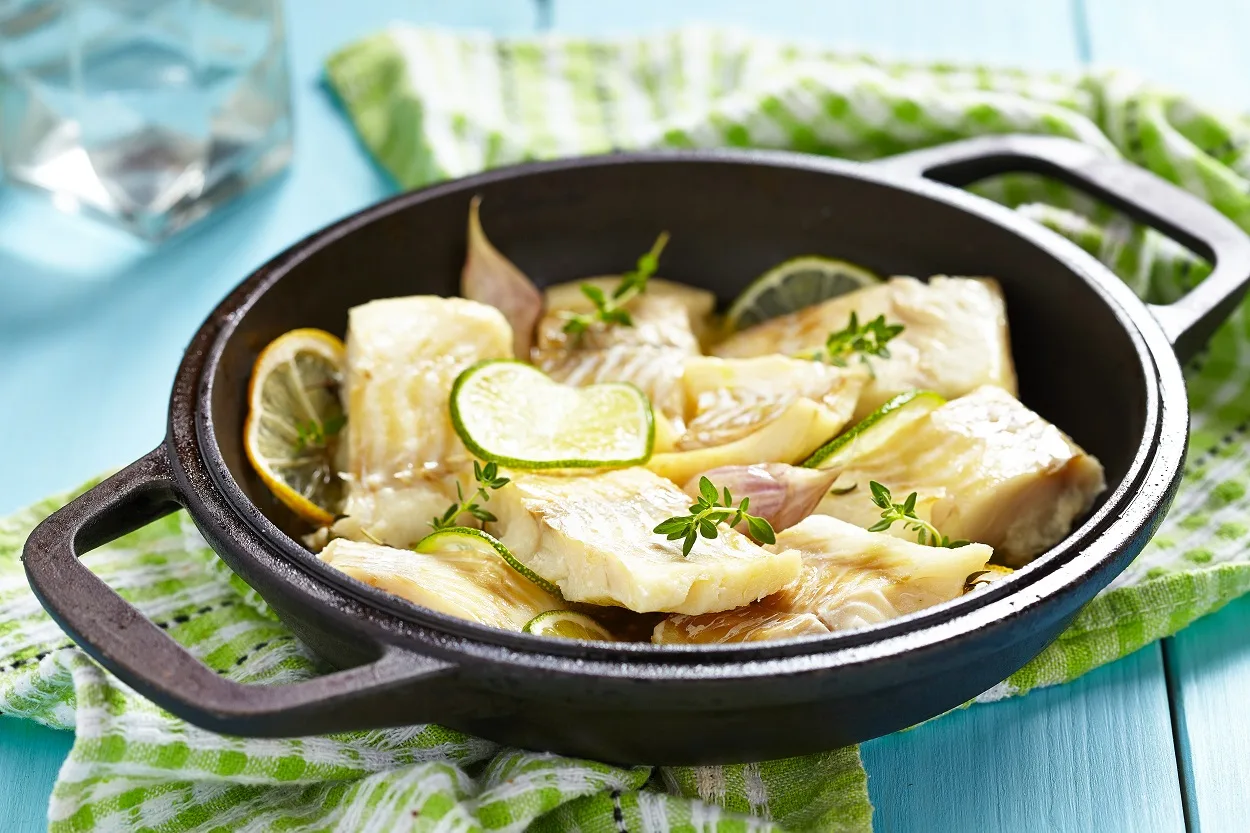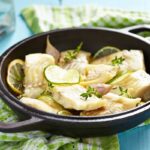Last Updated on 21st April 2022 by
Pan fried fish is one of the simplest and quickest ways to cook your haddock. I will show you how to cook haddock in a pan and make it come out beautifully crispy every time. You won’t need a lot of ingredients for the recipe I am going to show you, and you don’t need years of cooking experience either.
Fried fish was one of the first real foods I tried to make when I first started cooking. Before that, all I had cooked was boxed mac and cheese and ramen noodles. So, my cooking experience wasn’t very impressive, but I managed to make some decent fish without a lot of effort.
My first try at fried fish tasted fine but not spectacular. I have learned a lot since then, partly by cooking on my own and partly by learning from others. I want to share that knowledge with you and show you how to cook haddock fillets in a pan.
Preparing the Haddock
Before we start cooking together, let’s talk about the fish you use. If it is frozen haddock, it should be allowed to thaw first. You can place it in the fridge overnight, and by the time you are ready to cook it up, it should be fully thawed. If you attempt to cook the fish fillet frozen, it will cook in its own water, steaming it rather than frying it.
You could speed up the process, if you need the frozen haddock to be thawed the same day. Just place the fish in its packaging into a basin of room temperature water. Hot water may speed up the thawing process, but it also cooks the fish, and that’s not what you want.
If the fish is thawed already, you just want to make sure it is cut small enough to fit into your frying pan. Fresh haddock tastes the best, of course, but it can be more expensive and isn’t always the most convenient option.
You will need a frying pan to cook the fish- the bigger, the better. Thick bottomed frying pans and nonstick frying pans are the best for cooking fish in, but any pan will do.
How to Cook Haddock in a Frying Pan
Let’s get to the best part now- the frying! You can use flour to give the fish a light crust or not. It’s up to you. Some people prefer the crispy texture the flour gives the fish, while others are looking for a gluten free option.
If you choose to use flour in your frying, you only need a little bit.
The advantage of using the flour is that your seasonings can be worked into that, mixed together with the flour to create a well-seasoned fish. If you season the fish by itself with no outer covering, the seasonings can fall off more easily. You may actually have to use more seasoning that way, since a lot of it will just end up in the pan rather than on the fish.
If you want to cook the fish without the flour, just take that out of the recipe and fry as normal.
How to Cook Haddock in a Frying Pan
Ingredients
- 2 pounds of haddock filets
- 1 tsp of salt
- ½ tsp of pepper
- 2 tbsp of butter
- 1 cup of flour
- 1 tsp of garlic powder
- 2 tsp of onion powder
Instructions
- Mix together the flour and spices in a large bowl.
- Place the haddock filets in the bowl and cover with flour using your hands. Make sure the entire fish is well covered with the flour mixture.
- Add your butter to the frying pan and heat on a medium heat.
- Shake off extra flour from the fish so it is not losing flour as you transfer it to the hot oil. Once the oil is hot, add your fish to the frying pan. If the oil is hot enough, the fish will make a sizzling noise as soon as it comes in contact with the oil. Let the fish rest in the pan once it is there. Don’t try to adjust it.
- Wait to flip the fish over to the other side to cook until you see the fish start to brown on the bottom side. The edges may lift up on either end, making it easy to flip the fish over. When you see the edges browning, flip over the fish and let it cook until it has become brown on both sides. If you are having trouble getting the fish loose from the pan, it is not ready to flip yet or you didn’t put down enough butter in the pan.
- Once the fish is cooked on both sides, you can take it out of the pan and serve right away.
If you are cooking the haddock without flour, the edges will still brown when it is time to flip the fish over. Look for that sign that it is ready to be moved, and do not move the fish at all until then. Once again, test the fish with your spatula to see if it can be lifted easily. If it is not lifting yet, don’t try to force flip it. Give it a little longer and once the edges are browning, test every 30 seconds to see if you can flip it.
That’s how to cook haddock fish in a pan, and you can use the same cooking methods for other kinds of fish as well. As long as the filets are thin, the same frying method works great. I use the same method or a similar one for cooking catfish, salmon, trout, halibut, and more.
Haddock Frying Tips
How to cook crispy haddock in a pan with a heavy outer layer? You can use more flour in your mixture (about half a cup) and rub the fish with a beaten egg. Then, add a half cup of milk to the flour mixture or just enough to make a batter. Mix that together and cover your fish with the batter. Then, cook as directed above. You will get a very crispy, well battered fish.
How to cook haddock in a frying pan that isn’t drenched in oil? Just dry of the fish with a paper towel when it is done. Be sure to let the fish drain when you lift it out of the oil as well. Don’t let it sit in the oil for very long after cooking and leave it to drain for a few minutes on a cooling rack. All of these small measures help to eliminate a lot of the oil from the fish, giving you a healthier, leaner meal that isn’t as fatty.
You see how easy haddock is to cook, and most other kinds of fish filets are just as easy to cook. It only takes a few minutes, there are not a lot of steps or ingredients involved, and it’s tough to mess it up and cook it wrong once you are watching the fish as it cooks.
I strongly suggest using seasonings like what I have listed for this recipe or other similar seasonings that have some potency to them to help with the fish flavor. You want your fish to be flavorful but not overly fishy in its taste and smell.
I'm Pauline, a mother of four grown children, my passion for cooking stemmed from the joy i get cooking for my family. I love to try new dishes, especially when dining out but creating and sharing my own recipes is my favourite thing to do!




glean
Friday 21st of February 2025
mXzPCGqRoZ4